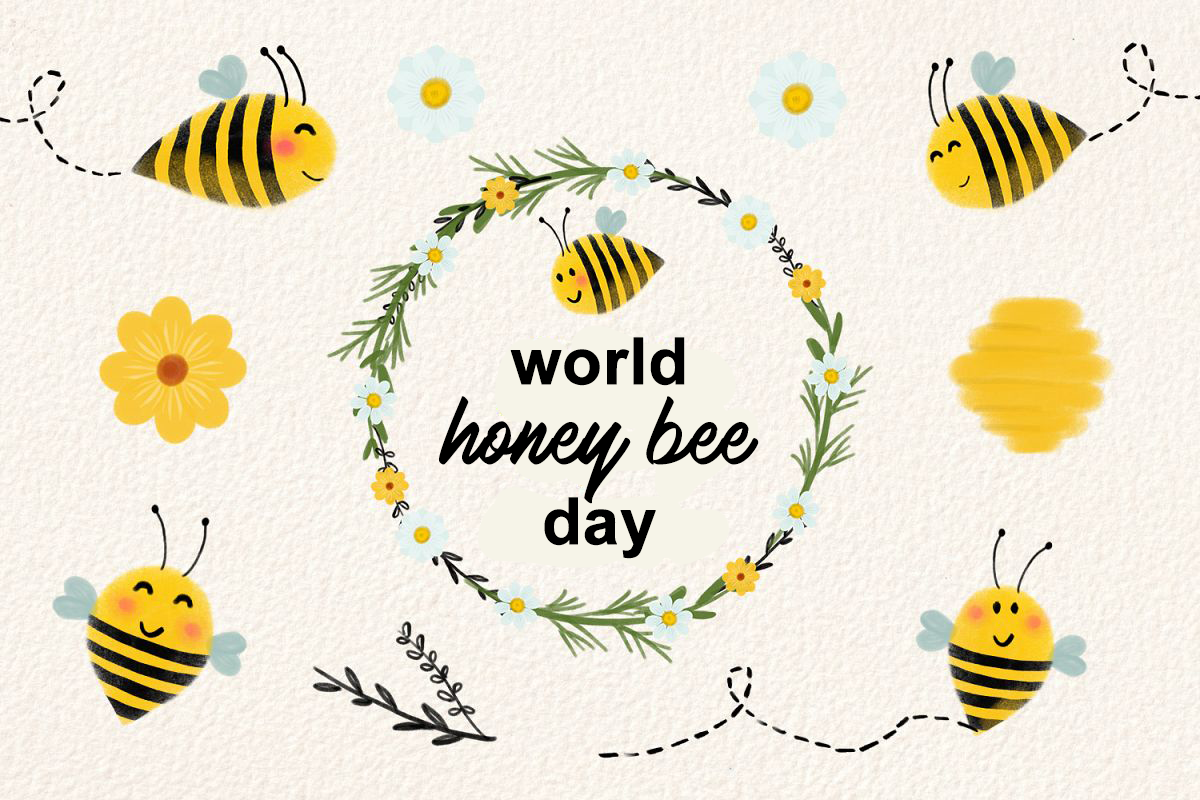World Honey Bee Day is the third Saturday in August and brings a buzzing celebration for beekeepers, honey lovers, and all blooming things.
Here are some facts-
Honeybees can recognize human faces
It might be surprising to learn that honeybees can recognize individual human faces. They do this by using their compound eyes to identify different patterns, such as the shape of a person's eyes and nose. This skill has been tested in studies where bees were trained to associate specific faces with a reward, such as a sugar solution.
Honeybees dance to communicate
Honeybees have a unique way of communicating with each other. When they find a good source of food, they perform a dance that indicates the direction and distance of the food source. This dance is called the "waggle dance" and it allows other bees in the colony to find the food source quickly.
Honeybees can fly up to 15 miles per hour
Honeybees are incredibly fast for their size. They can fly up to 15 miles per hour, which is much faster than most other insects. This allows them to quickly find food sources and return to their hive.
A honeybee colony can contain up to 60,000 bees
Honeybee colonies are incredibly large, with some colonies containing up to 60,000 individual bees. These bees work together to maintain the hive, gather food, and care for the young bees.
Honeybees have five eyes
Honeybees have two large compound eyes and three smaller simple eyes. The compound eyes are made up of thousands of individual lenses, which allows them to see in different directions at the same time. The simple eyes are used to detect changes in light and dark, which helps the bees navigate.
Honeybees can communicate with other bees using pheromones
In addition to their dances, honeybees also communicate with each other using pheromones. These chemical signals are used to alert other bees to danger, mark food sources, and regulate the behavior of the colony.
Honeybees can see ultraviolet light
Honeybees can see ultraviolet light, which is invisible to the human eye. This allows them to see patterns on flowers that are used as guides to find nectar and pollen.
Honeybees are the only insect that produces food for humans
Honeybees are the only insect that produces food for humans. In addition to honey, they also produce beeswax, royal jelly, and propolis, which have a variety of uses in medicine and cosmetics.
According to its organizers, the National Honey Bee Day program started with a simple concept:[1]
Bring together beekeepers, bee associations, as well as other interested groups to connect with the communities to advance beekeeping. By working together and harnessing the efforts that so many already accomplish, and [by] using a united effort one day a year, the rewards and message is magnified many times over. We encourage bee associations, individuals, and other groups to get involved. The program is free and open to all.
The event was started in 2009 by a small group of beekeepers who petitioned for and obtained a formal proclamation
[2] by the USDA honoring honey bees and beekeeping. In 2010, a non-profit, Pennsylvania Apiculture Inc. was organize.
[3] to facilitate and promote the observance better. The original observation date was August 22, 2009 (the fourth Saturday of August), but since then, it has settled permanently on the third Saturday of August.

